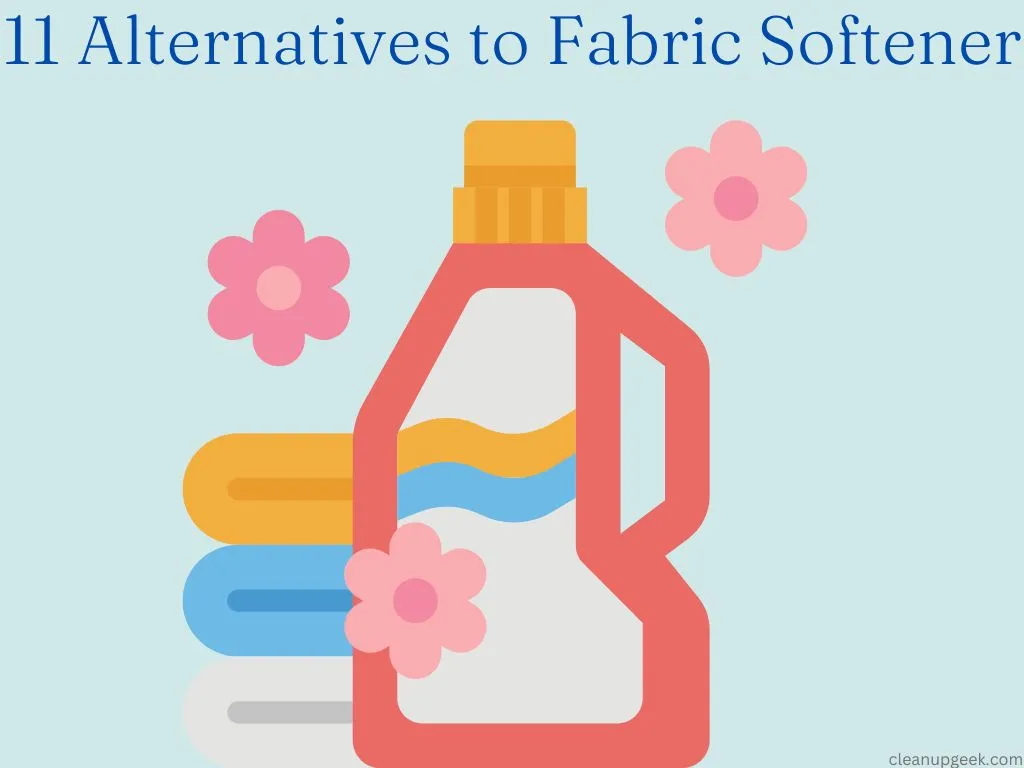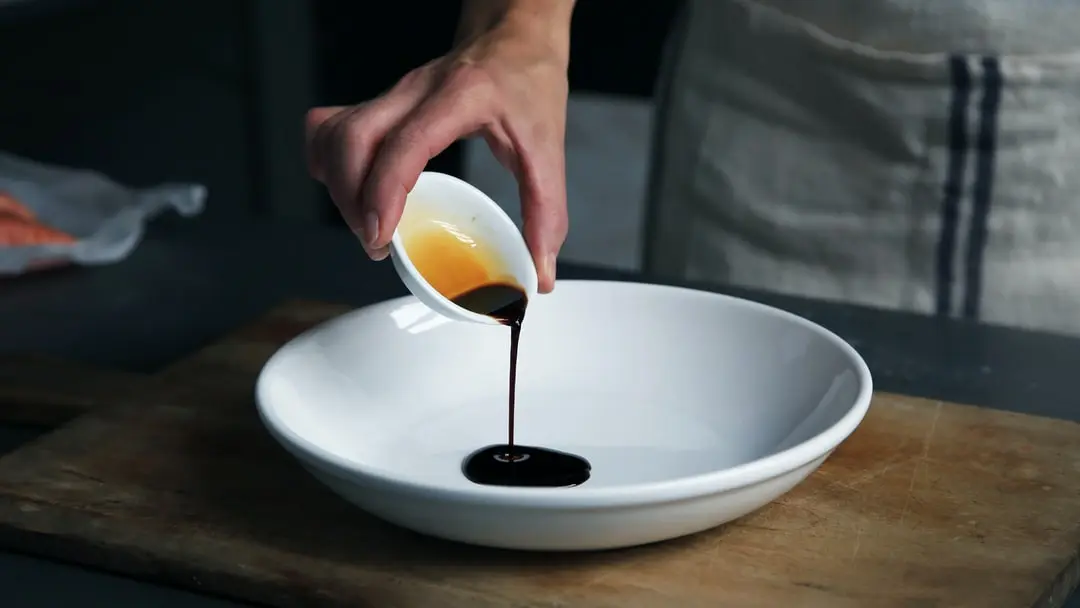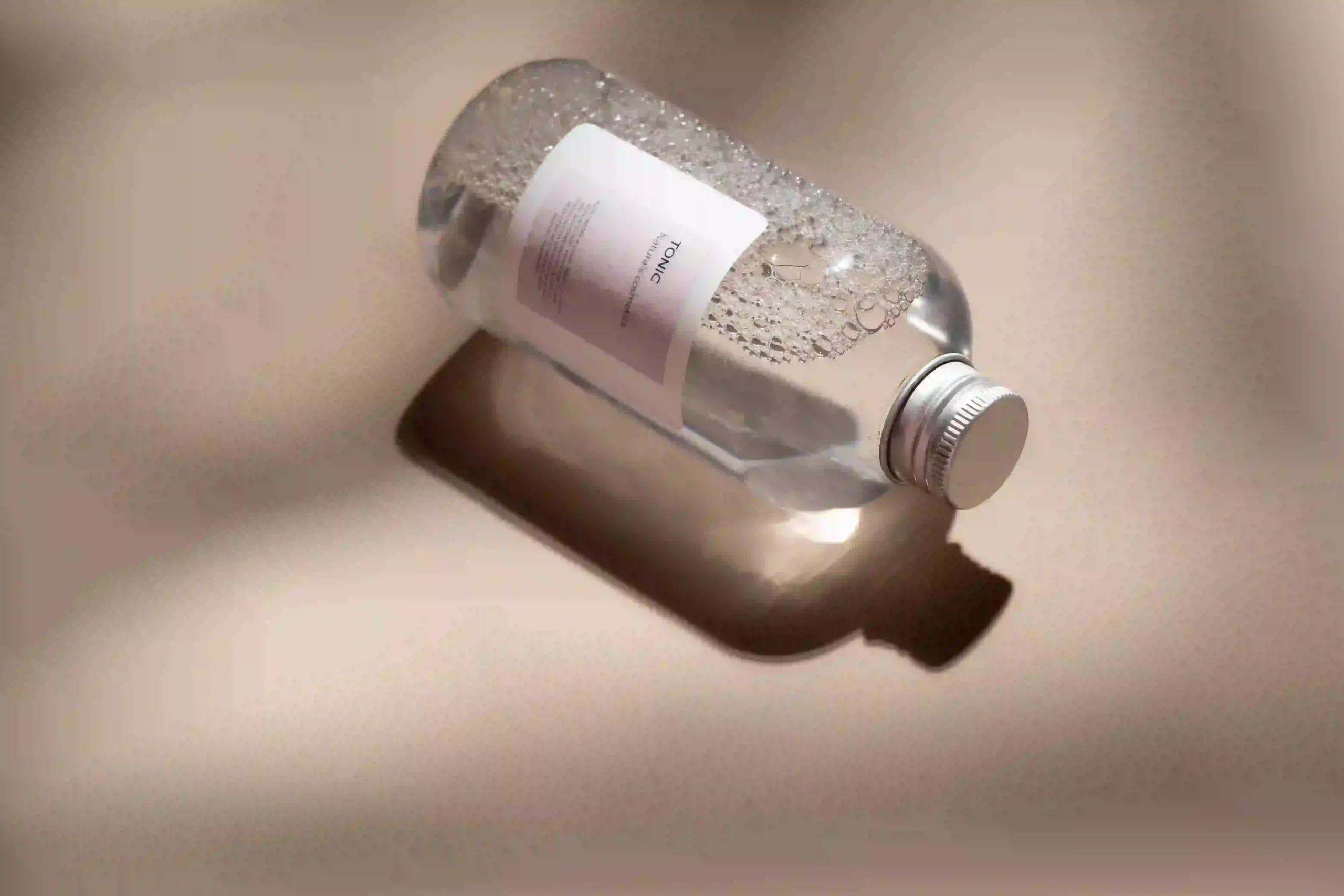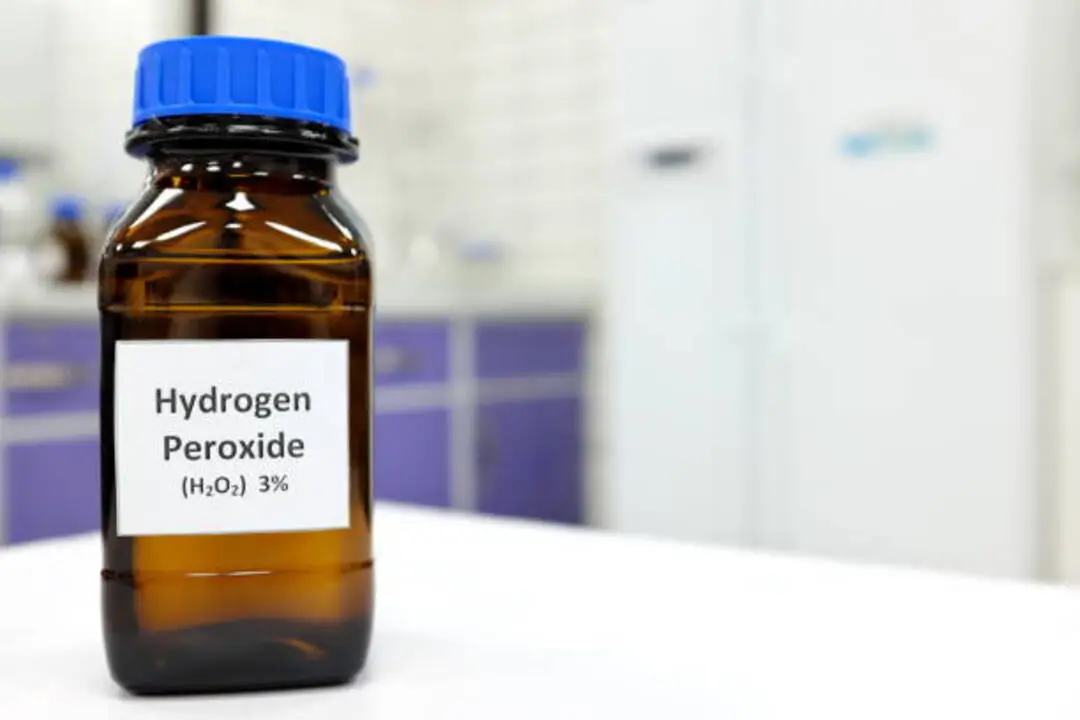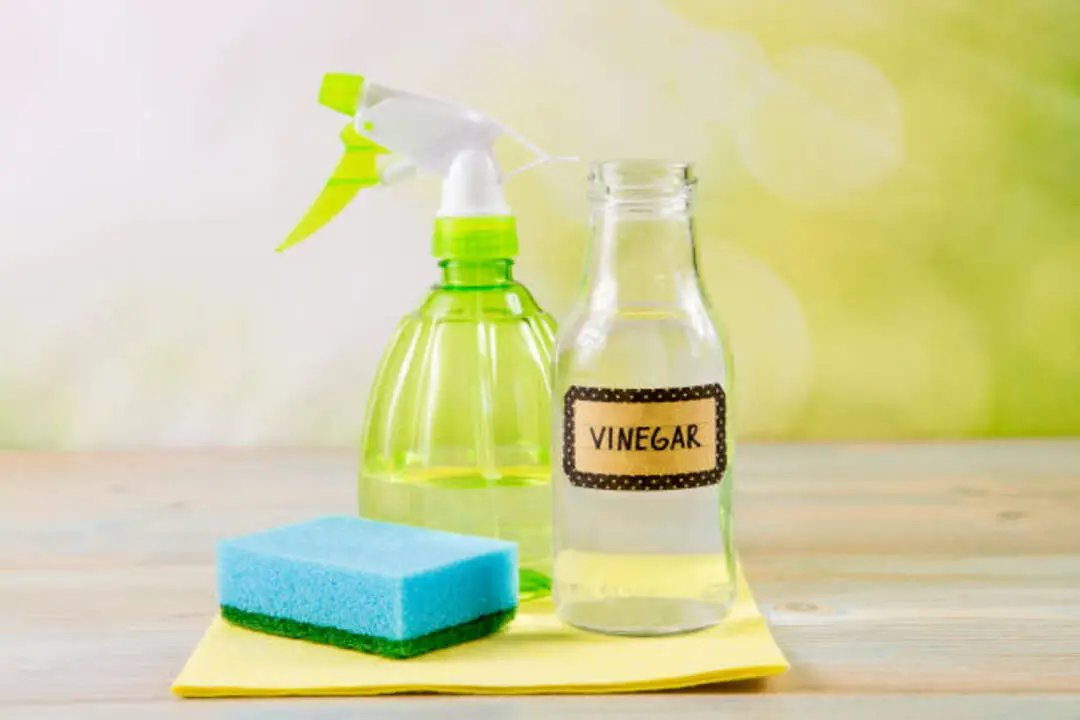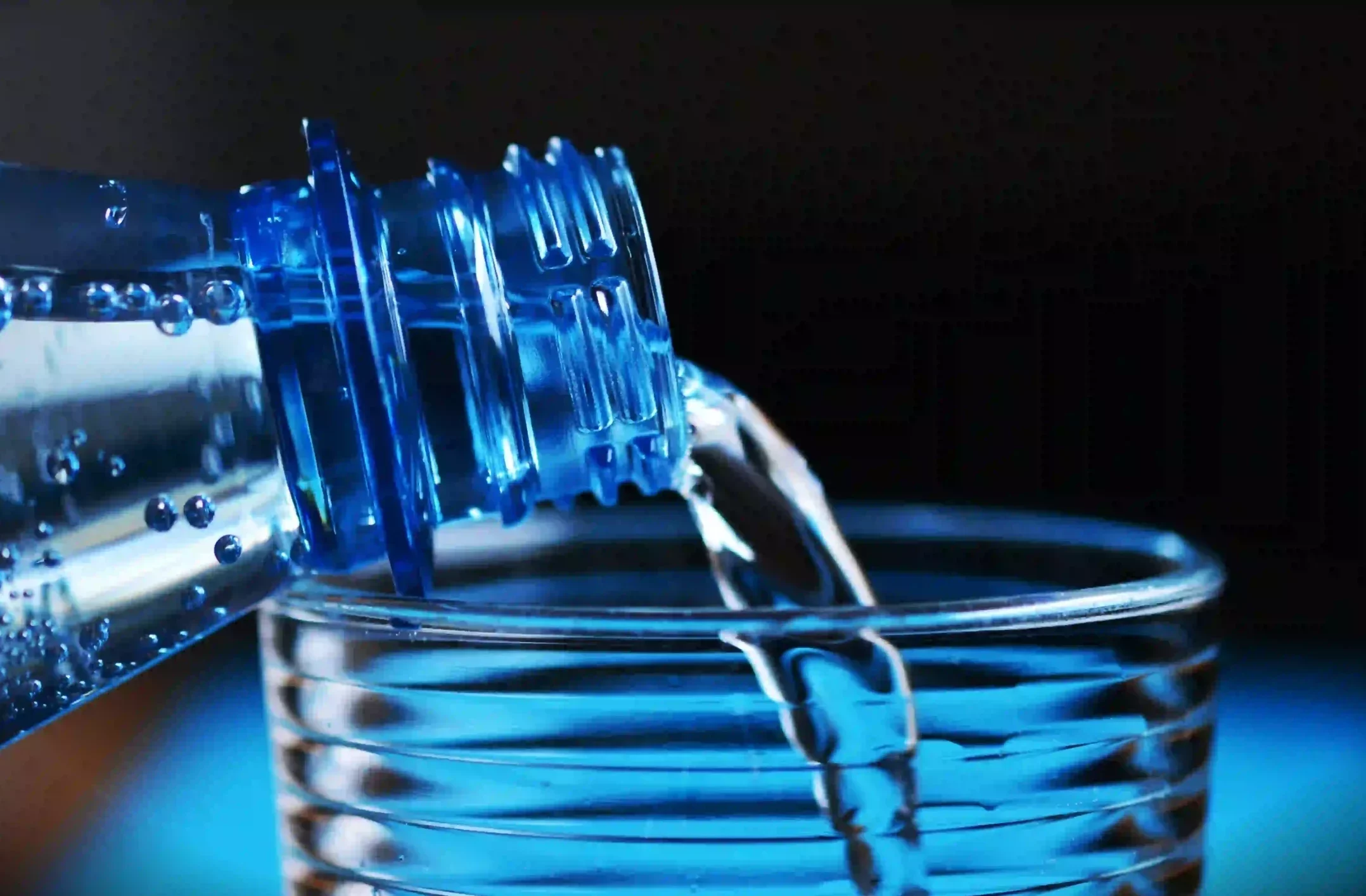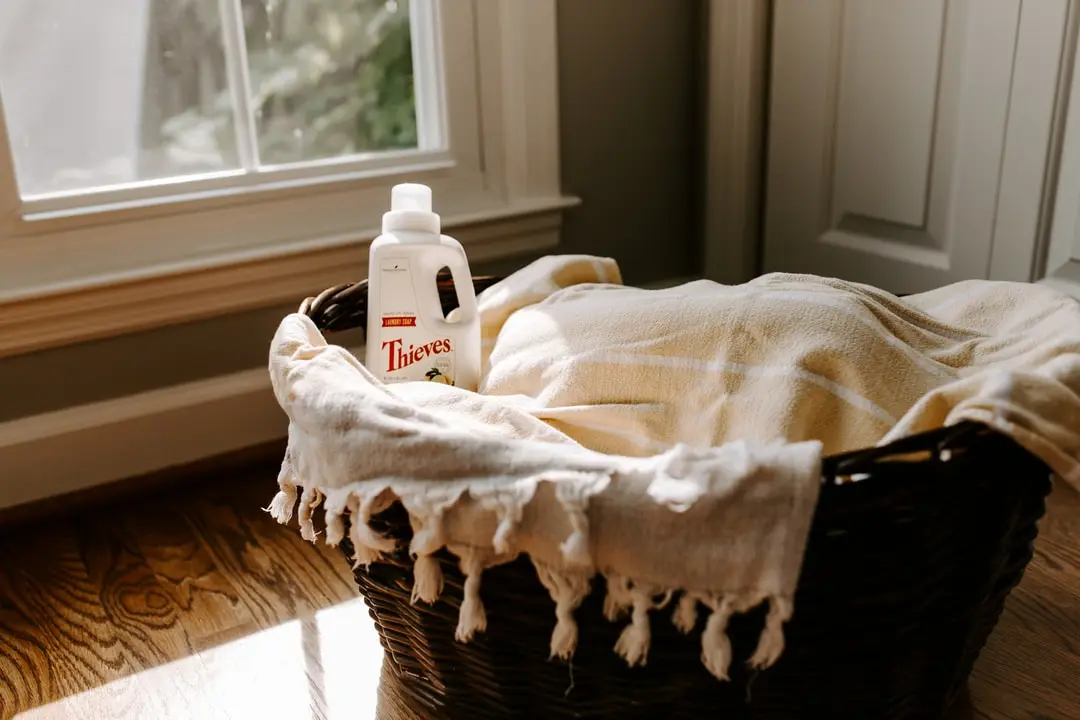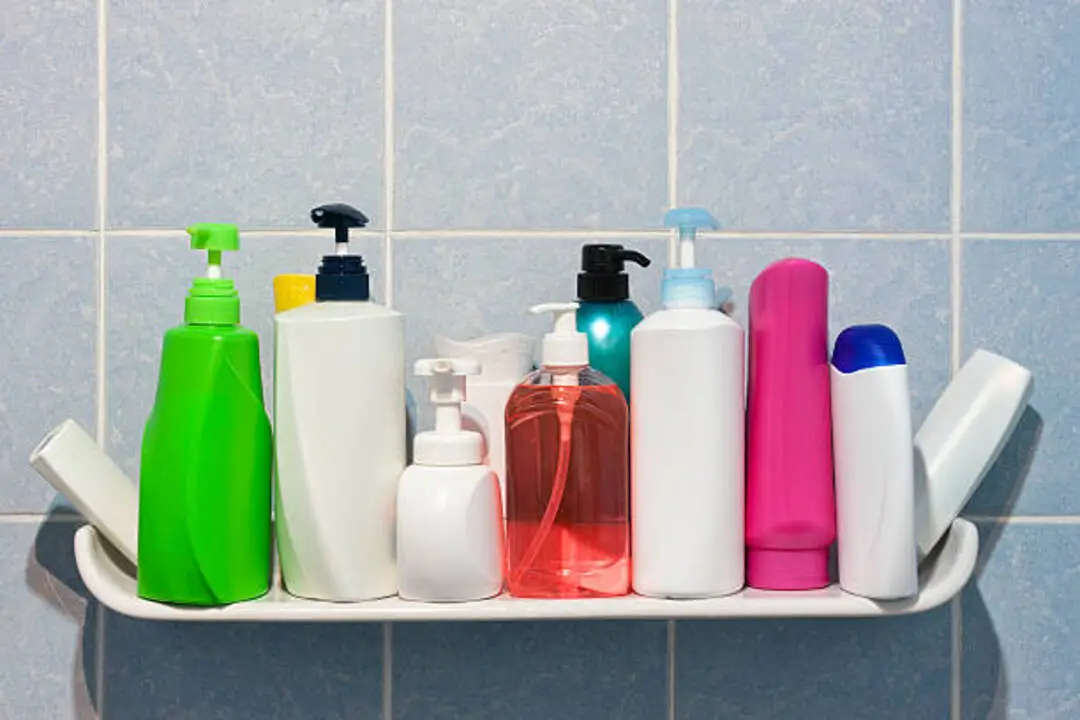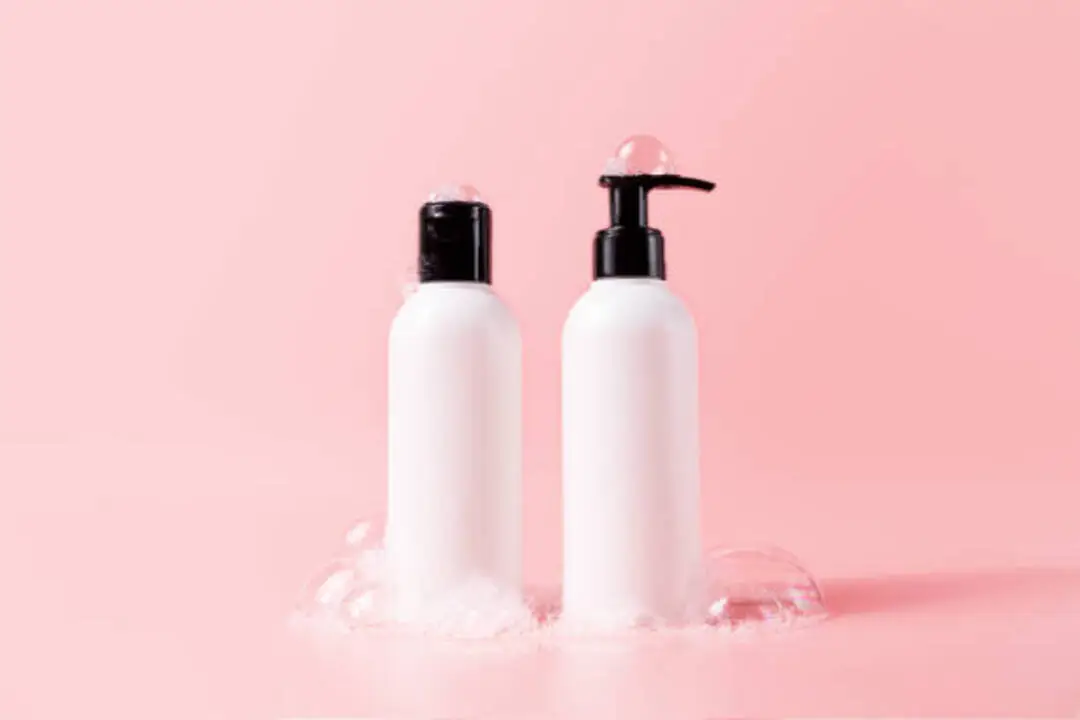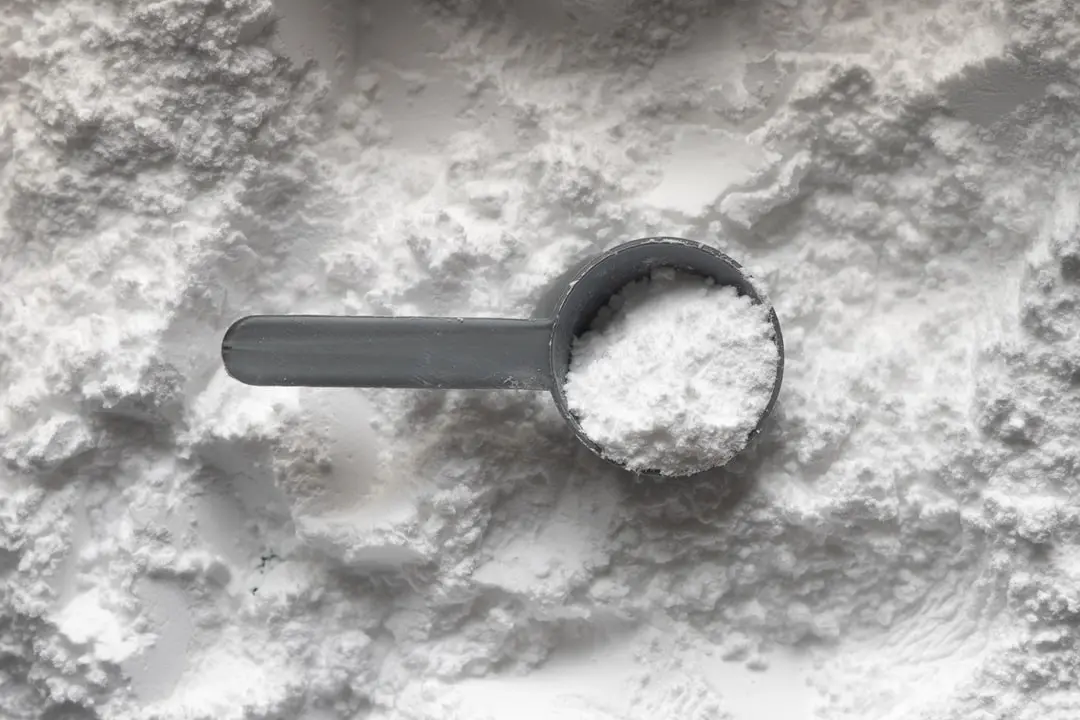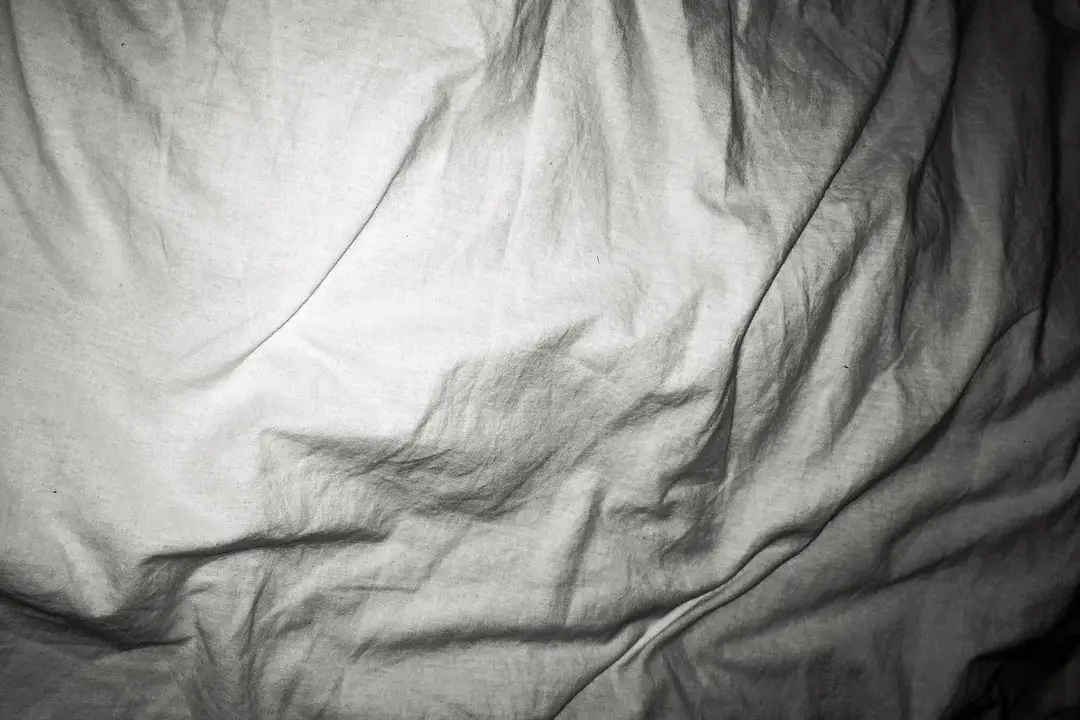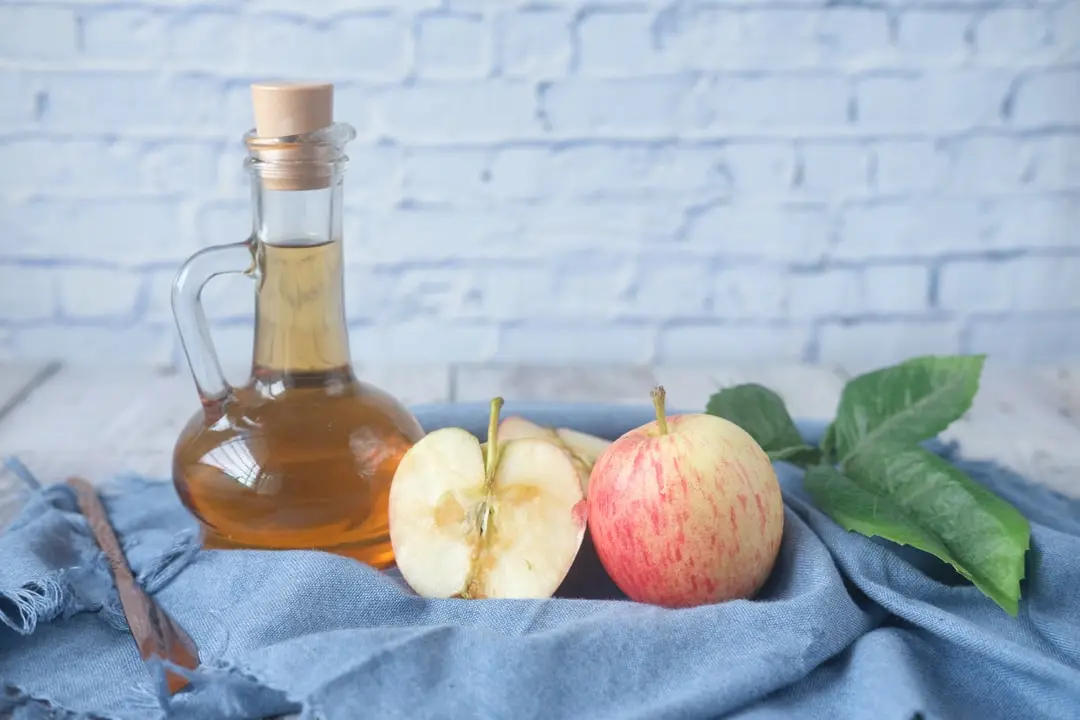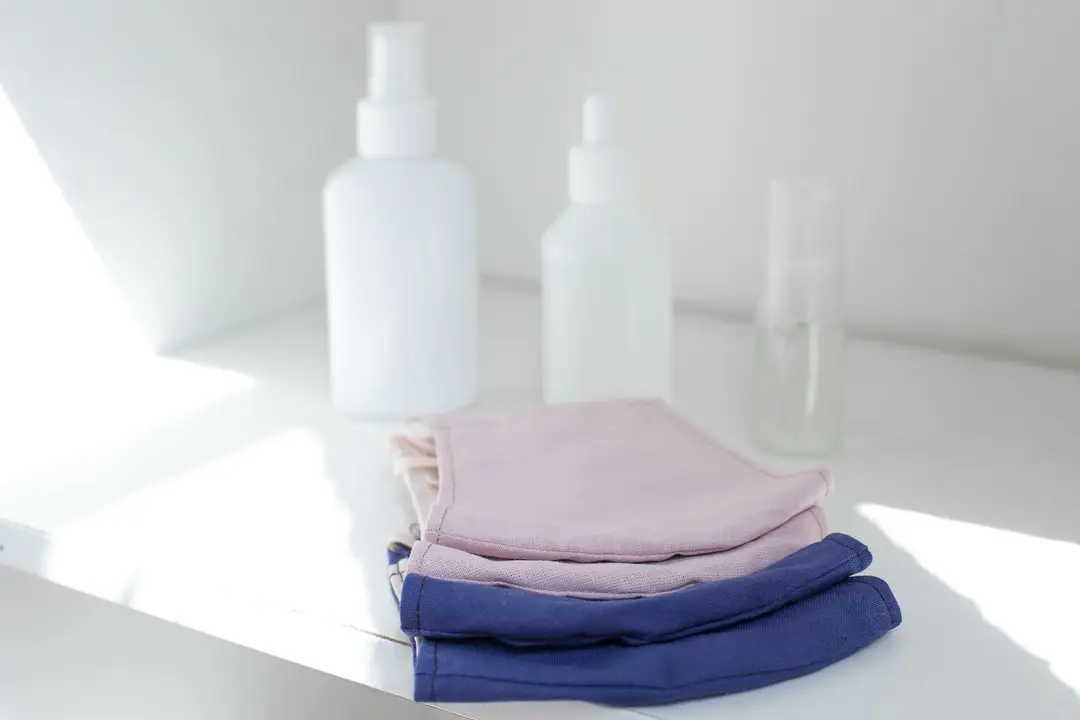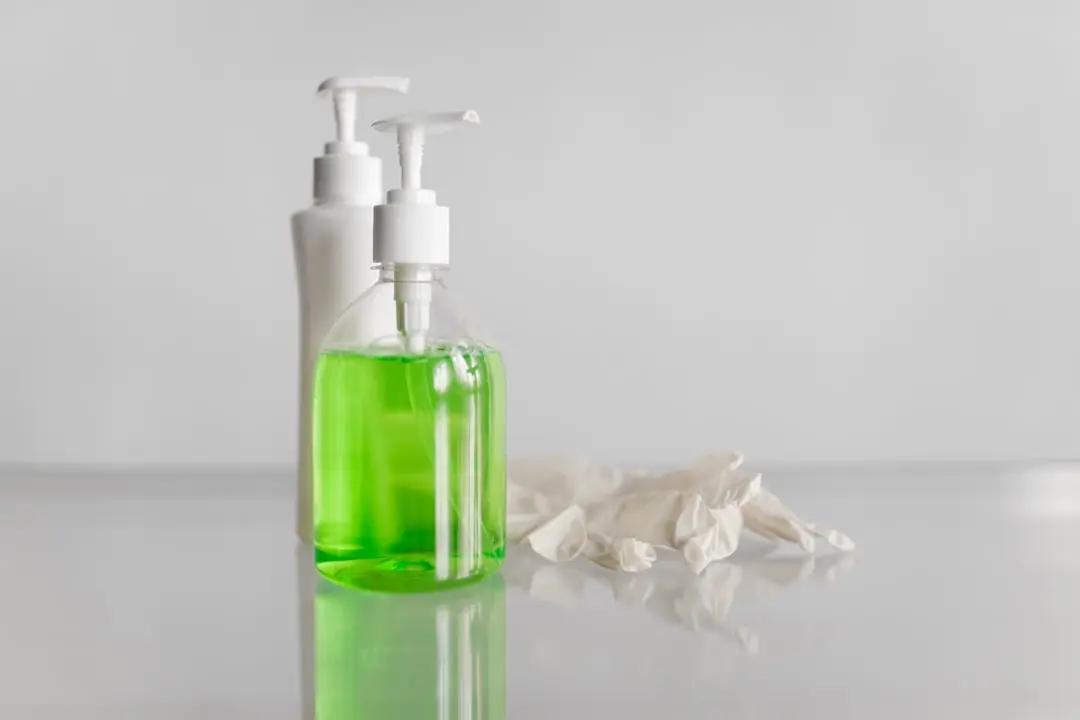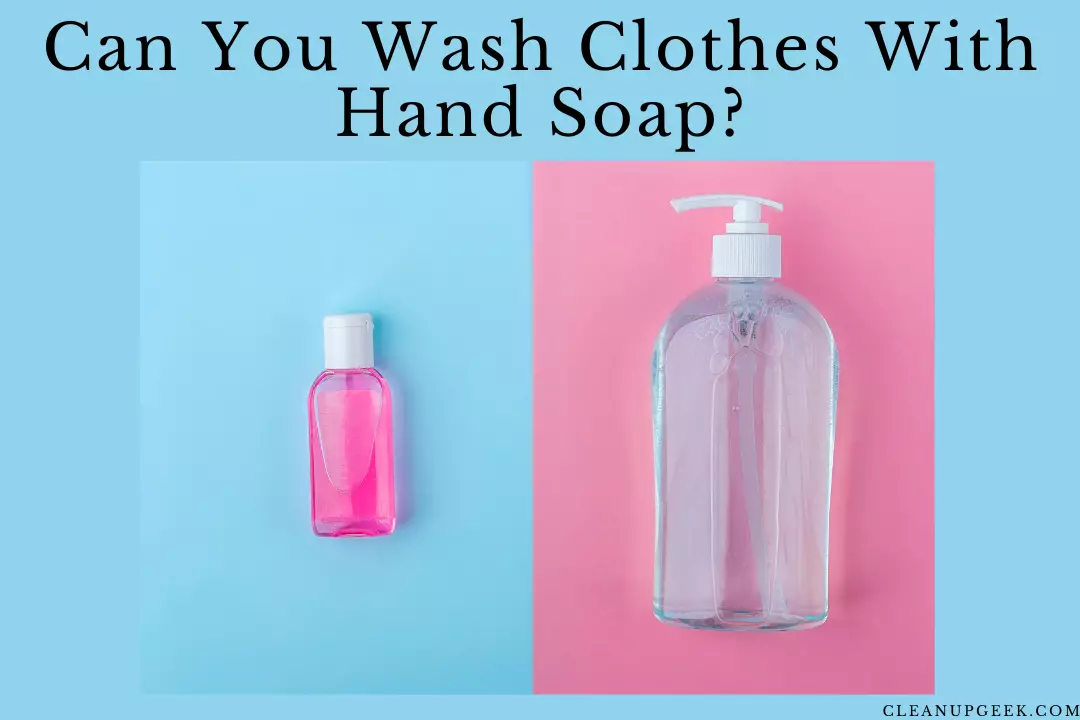Do you find yourself constantly reaching for fabric softeners in the laundry room? While it may leave your clothes feeling soft and smelling fresh, it turns out that this common household item is not as harmless as it seems.
Fabric softeners are often packed with chemicals that can irritate sensitive skin and harm the environment. But fear not, there are plenty of alternatives to fabric softener that will leave your clothes just as soft without the negative side effects.
In this article, we’ll explore 11 different options for replacing traditional fabric softeners. Whether you’re looking to save money, reduce your environmental impact or simply want a safer alternative for your family’s laundry routine, we’ve got you covered.
From vinegar to wool dryer balls, we’ll take a deep dive into each option so you can choose the best alternative for your needs. So put down that bottle of fabric softener and join us on a journey to discover the freedom of natural laundry alternatives.
The Dangers Of Traditional Fabric Softener
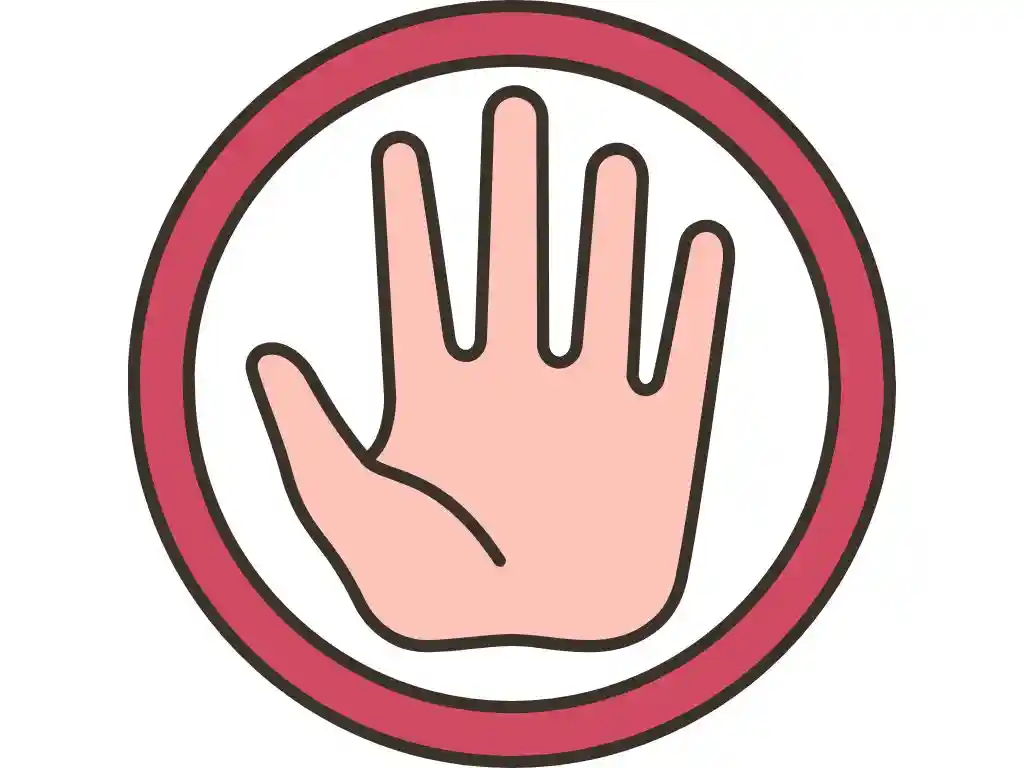
Do you know the health risks and environmental impact of using traditional fabric softeners? The chemicals used in these products can be hazardous to your health and the environment.
According to a study by the University of Washington, some fabric softeners emit toxic chemicals such as acetaldehyde, benzene, and formaldehyde into the air we breathe.
Chemicals to avoid include quaternary ammonium compounds (QACs), which are commonly found in fabric softeners. QACs are known to cause skin irritation, respiratory issues, and even asthma attacks.
Additionally, many traditional fabric softeners require large amounts of water for rinsing, which can contribute to water pollution.
But don’t worry, there are natural solutions available! You can use alternatives such as vinegar or baking soda that are safer for you and the environment.
By making this simple change in your laundry routine, you can reduce your exposure to harmful chemicals while still achieving soft and fresh-smelling clothes.
So let’s explore vinegar as a natural fabric softener!
Check This Article: How To Use Fabric Softener Without a Dispenser?
Vinegar As A Natural Fabric Softener
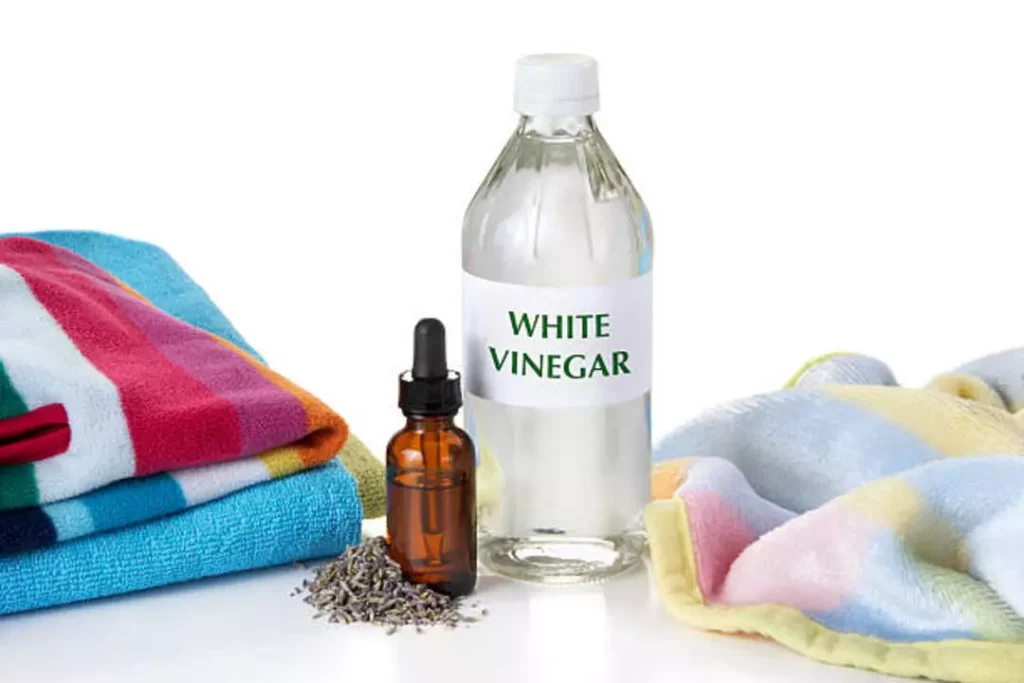
Using vinegar as a natural fabric softener has gained popularity among people who are looking for alternatives to traditional fabric softeners. Vinegar is a versatile and affordable product that can be found in most households. It contains acetic acid, which works by loosening up the fibers in the clothes, making them softer and less prone to static cling.
Switching to natural fabric softeners like vinegar has several benefits. Firstly, it is gentle on the skin and does not contain harsh chemicals that may irritate sensitive skin types. Secondly, it is an eco-friendly option as it does not contribute to the pollution caused by traditional fabric softeners. Lastly, vinegar is cost-effective and easily accessible, making it an ideal choice for those on a budget.
Using vinegar as a natural fabric softener can evoke feelings of liberation from harmful chemicals, guilt-free laundry practices that promote sustainability, and satisfaction from saving money without sacrificing quality. Try experimenting with adding essential oils to your vinegar mix for a more pleasant scent or using different types of vinegar for specific fabrics such as white distilled vinegar for cotton clothes.
Moving on from using traditional fabric softeners to natural alternatives like vinegar is just one step towards living a healthier life. In the subsequent section, we will discuss another alternative – wool dryer balls for fluffy clothes.
Wool Dryer Balls For Fluffy Clothes

Did you know that fabric softeners can actually harm your clothes? The chemicals in these products can cause damage to the fibers in your clothing, leading to a shorter lifespan for your favorite garments. Fortunately, there’s a simple solution: wool dryer balls! These handy little tools are an eco-friendly and effective alternative to traditional fabric softeners.
Wool dryer balls offer many benefits beyond just softening your clothes. They also help reduce static cling, cut down on drying time, and even improve air circulation in your dryer. Plus, unlike disposable dryer sheets, wool dryer balls can be used over and over again – making them an affordable and sustainable choice for laundry day.
If you’re interested in trying out wool dryer balls for yourself, you have two options: buying them or making them at home. While there are plenty of great options available for purchase online or in stores, making your own is a fun DIY project that allows you to customize the size and scent of your dryer balls to fit your preferences. Check out the table below for a step-by-step guide to making wool dryer balls at home:
| Materials Needed | Steps | Tips |
|---|---|---|
| Wool yarn | Use 100% wool yarn for the best results | Use 100% wool yarn for best results |
| Pantyhose or sock | 4. Place balls into pantyhose/sock 5. Knot between each ball 6. Wash in hot water with detergent 7. Dry on high heat | The hot water and heat from the dryer help set the shape of the balls |
| Essential oils (optional) | 8. Add a few drops of essential oil if desired 9. Store in an open container until ready to use | Avoid using too much oil as it can stain clothes |
Wool dryer balls are a great alternative to traditional fabric softeners, offering benefits like reduced drying time and improved air circulation. Making your own wool dryer balls is easy and allows you to customize them to fit your preferences. But if you’re looking for an even more personalized touch, check out the next section on DIY dryer sheets!
Check This Article: The Benefits of Using Fabric Softener
Diy Dryer Sheets For A Personal Touch
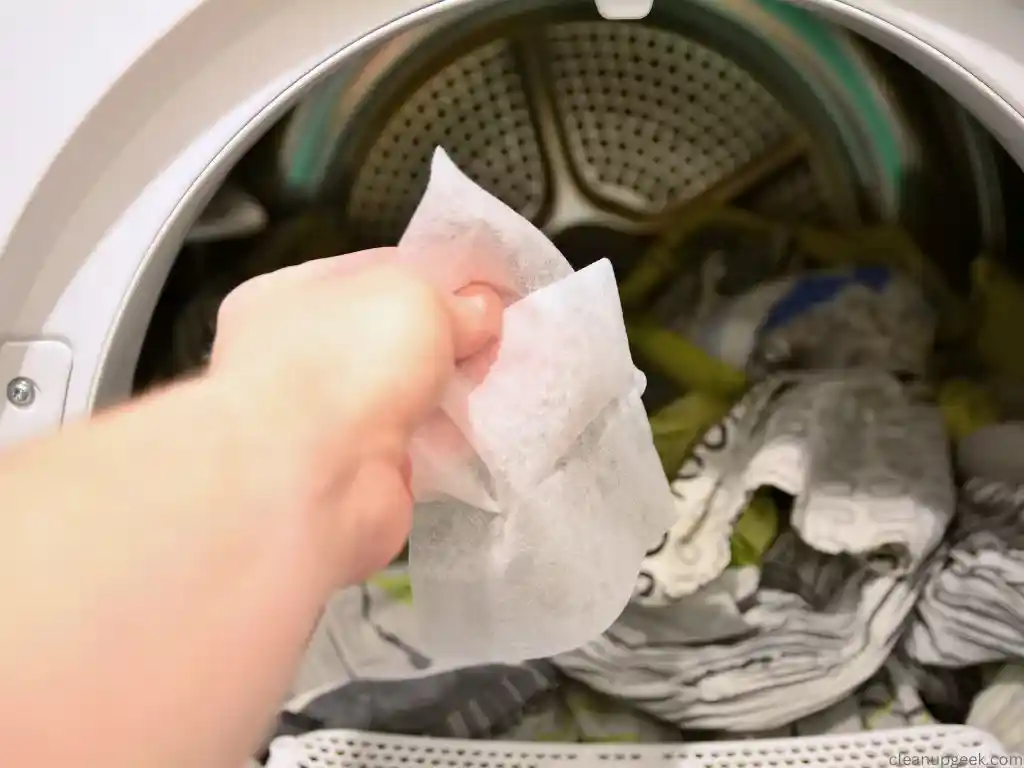
Looking for a fun and personalized way to freshen up your laundry without using traditional fabric softeners? Look no further than DIY dryer sheets!
With just a few simple ingredients and some creativity, you can create unique designs and scents that are perfect for your individual style.
To make your own DIY dryer sheets, start by cutting squares of fabric from an old t-shirt or other soft material. Then, mix together equal parts water and white vinegar in a spray bottle. Add a few drops of your favorite essential oil for scent, such as lavender or peppermint. Spray the mixture onto your fabric squares until they’re damp but not soaking wet. Then toss them into the dryer with your clothes!
One of the best things about making your own dryer sheets is that you can customize them to suit your tastes. Try creating different designs on each square using fabric markers or stamps. You can also experiment with different scents by mixing up essential oils or adding natural ingredients like lemon zest or dried herbs.
With DIY dryer sheets, the possibilities are endless!
Baking Soda For Softness And Odor Control
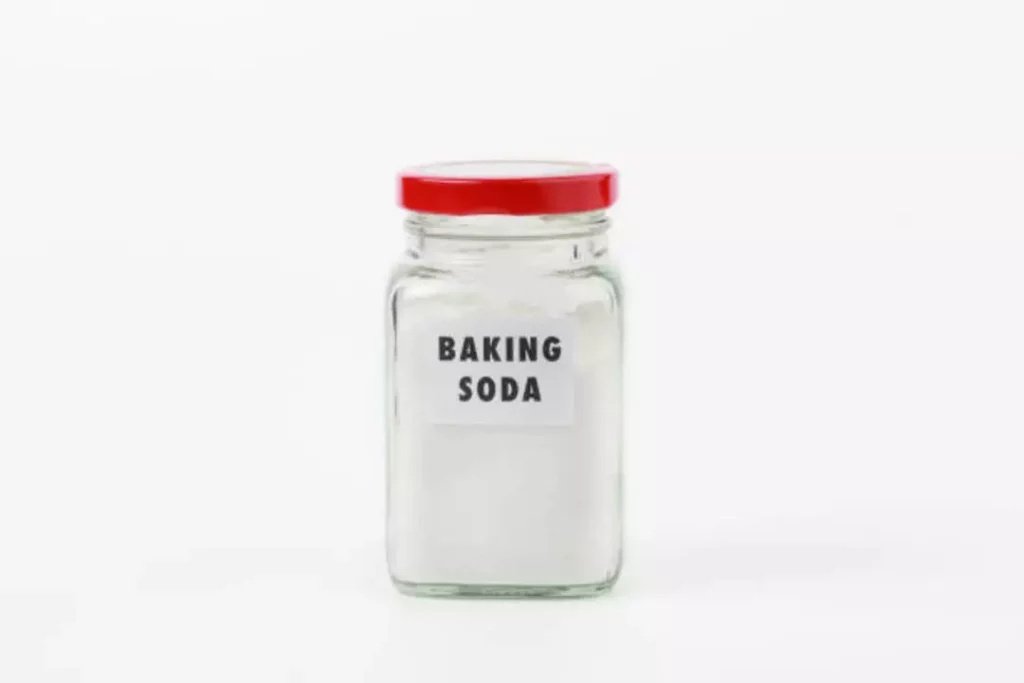
If you’re looking for a natural alternative to fabric softener, baking soda might be the answer. Not only does it soften your clothes, but it also helps control odors.
The benefits of baking soda don’t stop there, though. Using baking soda for laundry stains is another way to incorporate this versatile ingredient into your laundry routine. Simply mix a little bit of baking soda with water to create a paste and apply it to the stain before washing. You’ll be amazed at how effective it is at removing tough stains.
Incorporating baking soda into your laundry routine not only saves money but also promotes a more natural approach to cleaning. So next time you’re looking for a fabric softener alternative, consider using baking soda instead.
And if you want to add a pleasant fragrance to your clothes, keep reading about essential oils in the next section.
Essential Oils For A Pleasant Fragrance
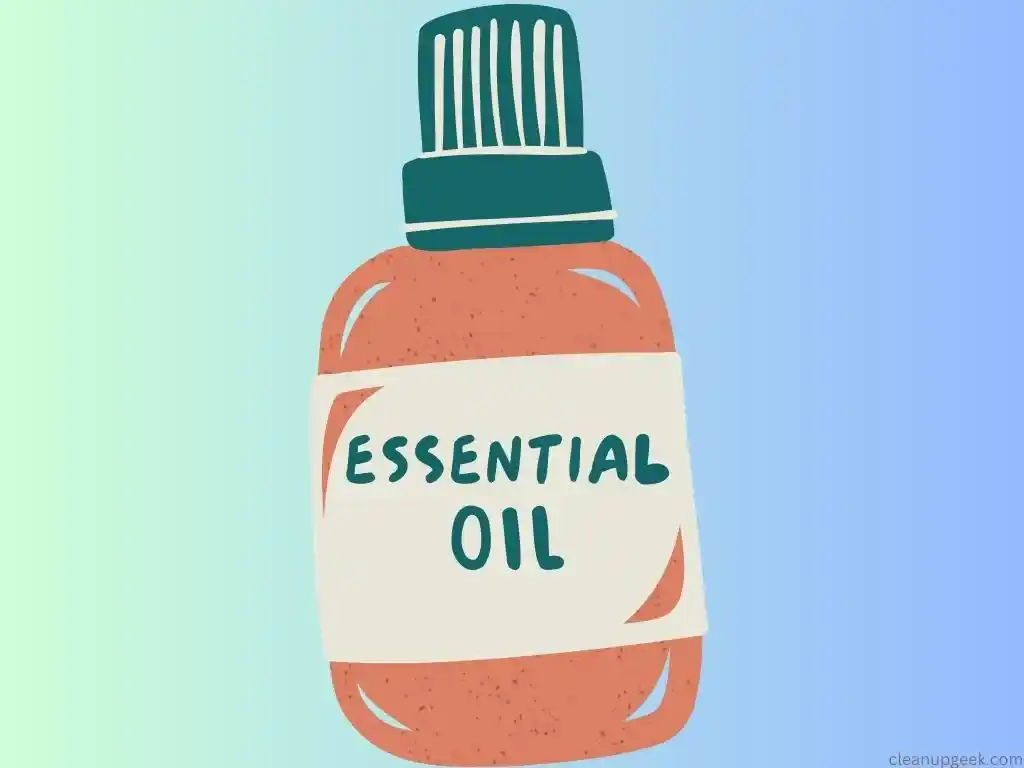
If you’re looking for a way to add a pleasant fragrance to your laundry without using fabric softener, essential oils are a fantastic alternative. Not only do they provide a delightful scent, but they also offer various benefits of aromatherapy.
Here’s what you need to know about using essential oils in your laundry routine. Firstly, essential oils can be used in combination with other natural ingredients to create DIY fragrance blends. For example, you can mix lavender oil with baking soda and sprinkle it on your clothes before washing them to freshen them up. Alternatively, you can add a few drops of your favorite oil to white vinegar and use it as a fabric softener replacement during the rinse cycle.
In addition to their pleasant scent, essential oils have numerous benefits of aromatherapy. They can help reduce stress and anxiety, promote relaxation and sleep, enhance focus and concentration, and even alleviate pain and inflammation. By incorporating these oils into your laundry routine, you can enjoy these therapeutic effects throughout the day.
Here are some popular essential oils that work well in laundry:
- Lavender: Calming and relaxing
- Lemon: Energizing and refreshing
- Eucalyptus: Soothing and invigorating
- Peppermint: Cooling and stimulating
- Tea Tree: Antibacterial and antifungal
Now that you know how beneficial essential oils can be for adding fragrance to your laundry without fabric softener let’s explore another natural solution for wrinkle reduction – aluminum foil.
Aluminum Foil For Wrinkle Reduction

If you’re looking for an alternative to fabric softener, aluminum foil might be just the answer you’re looking for.
You may have never thought of it before, but there are actually several uses for aluminum foil in the laundry.
For starters, many people swear by using aluminum foil balls in their dryers to help reduce wrinkles and static cling.
The benefits of using aluminum foil in the dryer don’t stop there.
It can also help improve airflow and increase drying time, which is great if you’re trying to save money on your energy bill.
Plus, it’s a more eco-friendly option than traditional fabric softeners that often contain harsh chemicals.
If you want to give the aluminum foil a try in your laundry routine, simply crumple up a sheet of foil into a ball and toss it into the dryer with your clothes.
You can reuse the same ball multiple times before needing to replace it.
And if you’re looking for a no-heat option, consider air drying your clothes instead – we’ll talk more about that in the next section.
Air Drying For A No-Heat Option
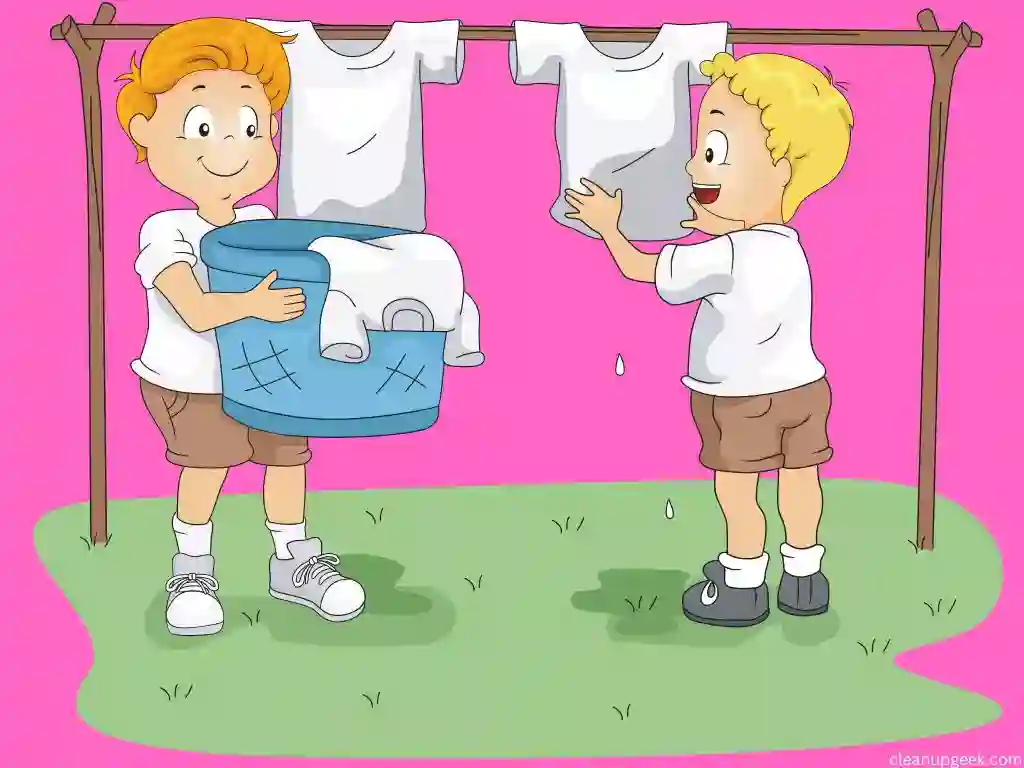
Air drying clothes is not only an effective way to eliminate the need for fabric softener, but it also has numerous benefits. It is an eco-friendly option that saves energy and money on electricity bills. Additionally, air drying preserves the quality of clothing by reducing wear and tear caused by high heat from dryers.
To air dry clothes indoors, you can use a drying rack or hang them on hangers. Ensure there is enough space between each item to allow for proper ventilation and prevent mildew growth. You can also use outdoor clotheslines if weather permits, which provide natural sunlight and fresh air for your clothes.
If you are concerned about wrinkles or stiffness in your clothes after air drying, there are several tips to consider. Firstly, shake out your clothing items before hanging them up to eliminate any creases. Secondly, use fabric softening sheets made from natural materials such as wool or bamboo instead of traditional dryer sheets. Lastly, avoid overloading the drying rack or hangers to allow adequate airflow around each item.
Moving onto liquid fabric softener alternatives, there are many options available that are both environmentally friendly and safe for sensitive skin. By choosing one of these alternatives over traditional fabric softeners, you can avoid exposing yourself and the environment to potentially harmful chemicals.
Check This Article: The Benefits of Air Drying Clothes on a Clothesline
Liquid Fabric Softener Alternatives
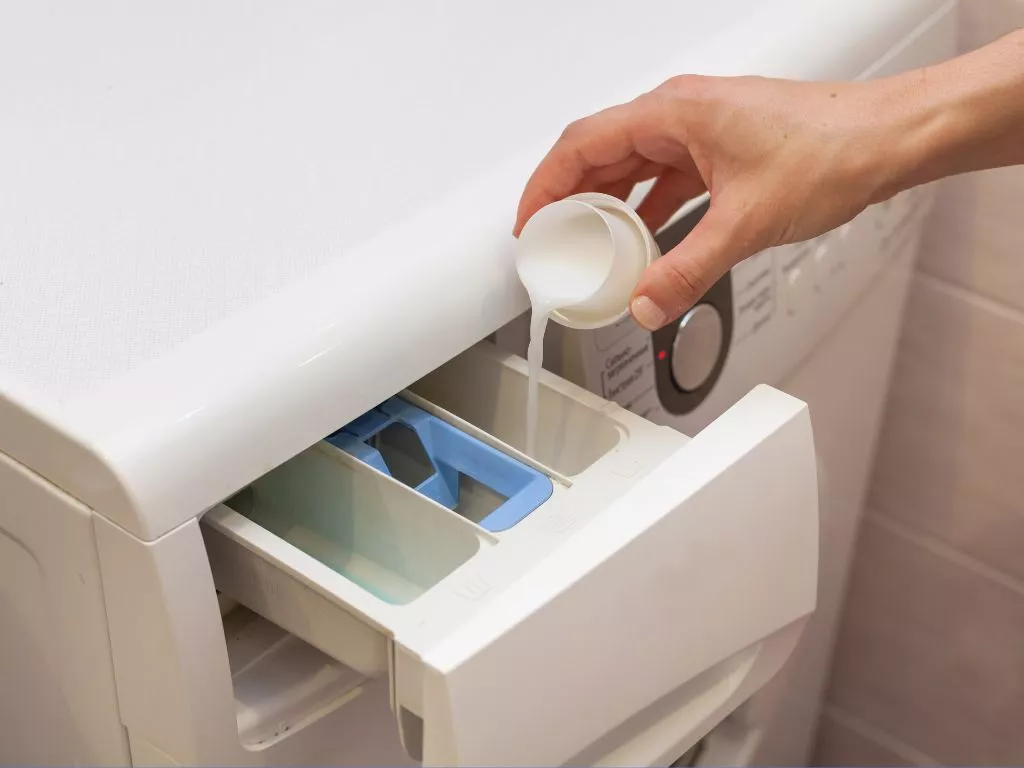
Let’s talk about homemade and natural alternatives to fabric softeners.
We can get creative with what we already have in our homes for a DIY solution, and there are plenty of natural alternatives out there too.
I’m sure we can find something that works for us, and I’m excited to explore our options!
Homemade Alternatives
Looking for DIY fabric softener ideas? Say goodbye to store-bought fabric softeners and hello to the benefits of using homemade fabric softeners!
Not only are these alternatives more affordable, but they’re also better for the environment and your health. Plus, you can customize the scent to your liking.
One easy option is white vinegar. It’s a natural fabric softener that helps remove odors and break down detergent residue. Simply add half a cup to your rinse cycle for softer clothes.
Another popular choice is baking soda, which not only softens fabrics but also helps brighten whites. Add half a cup to your wash cycle or sprinkle it on top of your clothes before starting the load.
For those who prefer a personalized scent, making your own fabric softener with essential oils is an excellent option. Mix together equal parts water and hair conditioner in a spray bottle, then add 15-20 drops of your favorite essential oil. Shake well before each use and spritz onto wet clothes before tossing them in the dryer.
Using these DIY options will leave you feeling like you have more control over what goes into caring for your clothes while still getting the benefits of traditional fabric softeners without any harsh chemicals or fragrances.
Natural Alternatives
Are you tired of using store-bought fabric softeners that contain harsh chemicals and fragrances? Well, there’s good news! You can easily make your own liquid fabric softener alternatives with natural ingredients.
One great option is using herbs, which not only soften fabrics but also offer additional benefits such as soothing properties for sensitive skin or uplifting scents to boost your mood. Homemade remedies using herbs can be made by steeping them in water or vinegar and then adding them to your rinse cycle.
For example, chamomile has calming properties and lavender has a relaxing scent, making them excellent choices for fabric softeners. You can also mix different herbs together to create your own unique blend.
The benefits of using natural alternatives like herbs are numerous. Not only are they better for the environment and your health, but they’re also affordable and customizable to your preferences.
So next time you’re doing laundry, consider making your own liquid fabric softener with herbs for a more natural and enjoyable experience.
Natural Laundry Detergent With Softening Agents
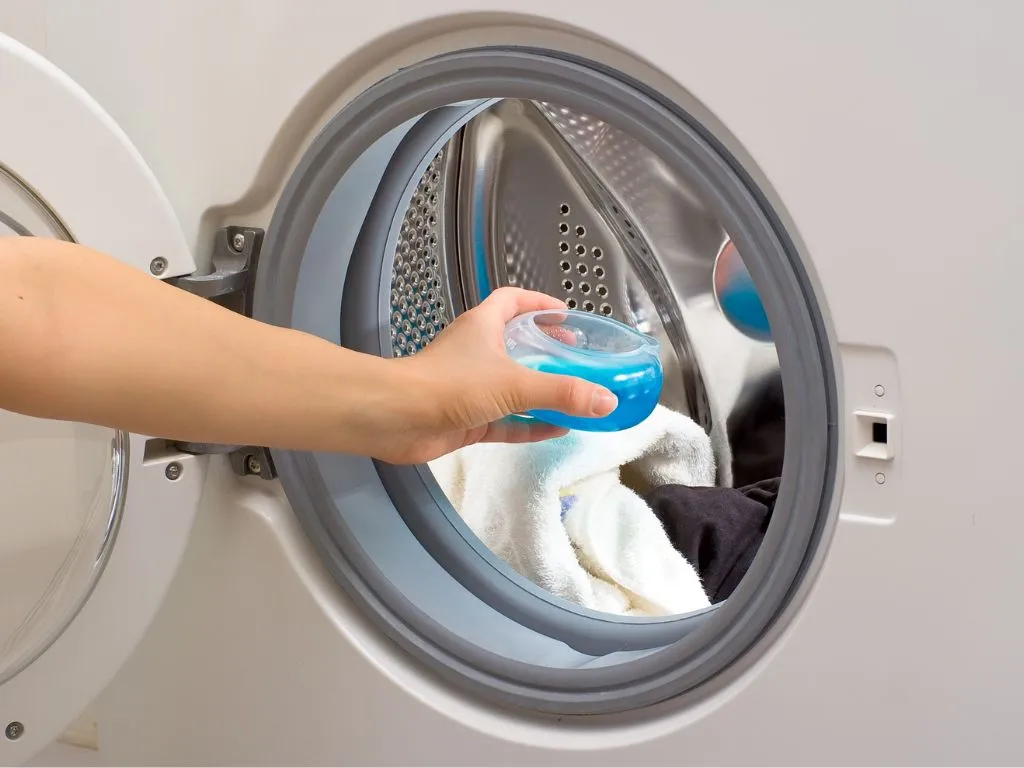
After exploring the various liquid fabric softener alternatives, it’s important to consider the benefits of using natural softeners. Not only are they better for the environment, but they also have fewer chemicals that could possibly harm your skin.
Natural softeners such as vinegar and baking soda are not only effective in softening clothes but are also cost-effective. If you’re looking for a more sustainable option, DIY recipes for homemade laundry detergent may be the way to go. This allows you to control what ingredients go into your laundry detergent and tailor it to suit your specific needs.
Adding essential oils such as lavender or lemon can provide a refreshing scent while still being gentle on your skin. Incorporating natural softeners and homemade laundry detergents into your laundry routine not only benefits you but also helps promote sustainability.
It’s time to take control of what goes into our clothes and make small changes that can positively impact our health and environment. Now, let’s dive into dryer sheet alternatives for sensitive skin.
Dryer Sheet Alternatives For Sensitive Skin
If you have sensitive skin, fabric softeners, and dryer sheets can cause irritation and discomfort. Fortunately, there are several alternatives that can provide the same benefits without the harsh chemicals. Here are some options to consider:
- Wool Dryer Balls: These reusable balls help prevent static cling and reduce drying time. They are made from 100% natural wool and are hypoallergenic, making them an excellent choice for those with sensitive skin.
- Vinegar: Adding a cup of white vinegar to your wash cycle can help soften fabrics and reduce static cling. It also helps remove any lingering odors from your clothes.
- Baking Soda: Another natural alternative is baking soda. Add half a cup to your laundry cycle to help soften fabrics and reduce static cling.
Sensitive skin precautions should always be taken when choosing laundry products, as harsh chemicals can cause adverse reactions on the skin. Additionally, sustainability concerns have led many people to seek out more eco-friendly options for their household needs.
By opting for one of these dryer sheet alternatives, you not only protect your skin but also do your part in reducing waste and minimizing your environmental footprint.
In the next section, we’ll explore some eco-friendly fabric softener options that are gentle on both your skin and the planet.
Eco-Friendly Fabric Softener Options
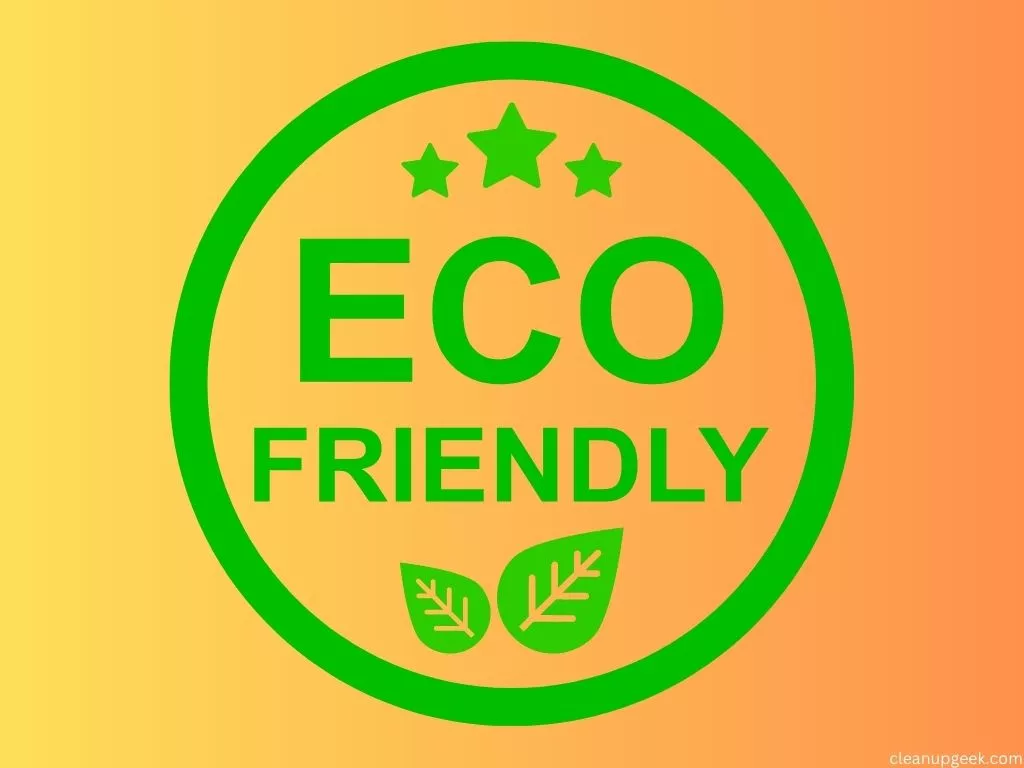
We all want our laundry to be soft and smell nice, but using fabric softener isn’t always the most eco-friendly option.
Luckily, there are natural softeners and DIY softener recipes that can be used instead!
For natural options, try using vinegar or baking soda – both are gentle on fabrics and effective at removing odors.
If you’re feeling creative, there are also some great DIY recipes for fabric softeners that can be made with ingredients like essential oils and sea salt.
Natural Softeners
Are you tired of using fabric softeners that are harmful to the environment? Worry no more because eco-friendly options are available!
One of these is natural softeners, which have a lot of benefits. First, they are cost-effective, as most of them can be found in your kitchen pantry. Second, they are gentle on clothes, making them last longer. Third, they do not contain any chemicals or artificial fragrances that could irritate your skin.
Some natural softeners you can use include white vinegar, baking soda, and essential oils. White vinegar works by breaking down the mineral buildup in fabrics that causes stiffness. Baking soda is an excellent alternative for fabric softeners as it has a mild alkaline property that balances the pH level in the water and removes odors from clothing. Lastly, essential oils like lavender and lemon add fragrance to your clothes without harming the environment.
In conclusion, using natural softeners instead of traditional fabric softeners is a great way to help preserve our environment while still enjoying the benefits of having softer clothes. Whether it’s white vinegar or baking soda or essential oils you choose to use as a natural fabric softener alternative; rest assured that you’re doing your part in taking care of our planet.
Diy Softener Recipes
Now that we know the benefits of natural fabric softeners, let’s take it a step further by exploring DIY softener recipes. Not only is this an eco-friendly option, but it also allows us to customize the scent according to our preferences. Plus, it’s fun and easy to do!
To make your DIY fabric softener, you’ll need natural ingredients that are easily sourced like baking soda, white vinegar, and essential oils.
Mix together equal parts of baking soda and water until it dissolves completely. Then add in a cup of white vinegar and stir. Lastly, add several drops of your favorite essential oil for fragrance.
Store your DIY softener in an airtight container or spray bottle for easy use.
Another DIY softener recipe is using Epsom salt as the main ingredient.
Mix together one cup of Epsom salt with 20-30 drops of your favorite essential oil and store in a jar with a tight-fitting lid.
To use, simply add two tablespoons per load during the rinse cycle. This recipe not only softens clothes but also helps remove stains and brightens whites.
In conclusion, making DIY fabric softeners is a great way to reduce waste and save money while still enjoying the benefits of softer clothes. With natural ingredients sourcing readily available in our kitchen pantry, we can create our own personalized scents without harming the environment.
So why not give it a try? Your clothes (and wallet) will thank you!
Comparing The Cost Of Fabric Softener Alternatives
Comparing cost and effectiveness is essential when choosing an alternative to fabric softener. While some alternatives may be cheaper than traditional fabric softeners, they may not be as effective. It’s important to consider how much product you need to use per load of laundry and how long the product will last.
Sustainability and environmental impact should also be taken into account when choosing a fabric softener alternative. Many traditional fabric softeners contain harmful chemicals that can harm the environment and your health. Choosing a more sustainable option, such as wool dryer balls or vinegar, can help reduce your carbon footprint while still achieving soft and fresh-smelling laundry.
Overall, it’s important to weigh the pros and cons of each alternative before making a decision. While cost and sustainability are important factors to consider, effectiveness should not be overlooked. By finding the right balance between these three factors, you can choose the best fabric softener alternative for your needs.
Tips For Choosing The Best Fabric Softener Alternative
Now that we have established the cost-effectiveness of fabric softener alternatives, let’s dive into some dos and don’ts for choosing the best option for your needs. It’s important to keep in mind that while these alternatives can be effective, they may not work as well in all situations.
Firstly, let’s discuss some pros and cons of using fabric softener alternatives. One major pro is that many of these options are eco-friendly and free of harsh chemicals. This is not only better for the environment, but also for those with sensitive skin or allergies. However, a con is that some alternatives may require more time or effort to use than traditional fabric softeners.
When deciding which alternative to use, it’s important to consider your personal preferences and needs.
Some dos include:
- researching different options
- reading reviews from others who have tried them
- testing a small area of your clothes before using a new product on an entire load.
On the other hand, don’t assume that all-natural ingredients are safe for everyone, and always follow the product instructions carefully.
Remember, there are many great fabric softener alternatives out there, but it’s important to find one that works well for you and fits your lifestyle. By keeping these dos and don’ts in mind, you can make an informed decision and enjoy softer laundry without sacrificing your health or the environment.
Conclusion and final thoughts 💭
In conclusion, there are many alternatives to traditional fabric softeners that not only help soften your clothes but also provide additional benefits such as reducing static cling and odor control. By using natural ingredients such as vinegar, wool dryer balls, and baking soda, you can create a laundry routine that is both eco-friendly and cost-effective.
So why settle for the harsh chemicals found in traditional fabric softeners when you can explore these alternative options?
With a little experimentation and personal touch, you can add a new level of freshness and softness to your laundry routine while also doing your part for the environment.
Let’s embrace these fabric softener alternatives with open arms and say goodbye to the old ways.
